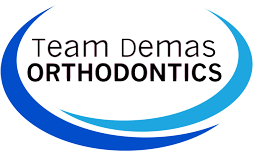Dentofacial Orthopedics
What Is Dentofacial Orthopedics?
You may have noticed that Dr. Demas specializes in “orthodontics and dentofacial orthopedics”. While most people have heard of orthodontics, many are confused by the “dentofacial orthopedics” part of the title. We’re here to explain.
Every Orthodontist Starts Out in Dental School
After finishing dental school, some graduates start practicing dentistry right away. Others choose to pursue a dental specialty, which requires additional schooling during a two- to three-year residency program.
There are nine specialties sanctioned by the American Dental Association. You may have heard of pediatric dentistry (dentistry for children), periodontics (dentistry focusing on the gums), and oral surgery.
One of the nine specialties is “orthodontics and dentofacial orthopedics.”
You probably know an orthodontist straightens teeth: “ortho” comes from the Greek for “straight” or “correct,” and “dontic” from the Greek for “teeth.”
But what about dentofacial orthopedics? “Dentofacial” is “teeth”, plus “face”. “Ortho” means “straight” and “pedic” is from the Greek for “child.”
What Makes Dentofacial Orthopedics Special?
While orthodontics manages tooth movement, dentofacial orthopedics guides facial growth and development, mainly during childhood.
We often use appliances in orthodontics and dentofacial orthopedics – braces for orthodontics, and sometimes other specialized appliances like a forsus and expanders.
Sometimes orthopedic treatment may precede conventional braces, but often the two are accomplished at the same time. So if your child gets braces and a forsus, they are undergoing orthodontics and dentofacial orthopedics.
Because Dr. Demas is skilled in both areas of orthodontic and dentofacial orthopedic, he’ll diagnose any misalignments in the teeth and jaw as well as the facial structure.
He can also create a treatment plan for your child integrating both orthodontic and dentofacial orthopedics.
